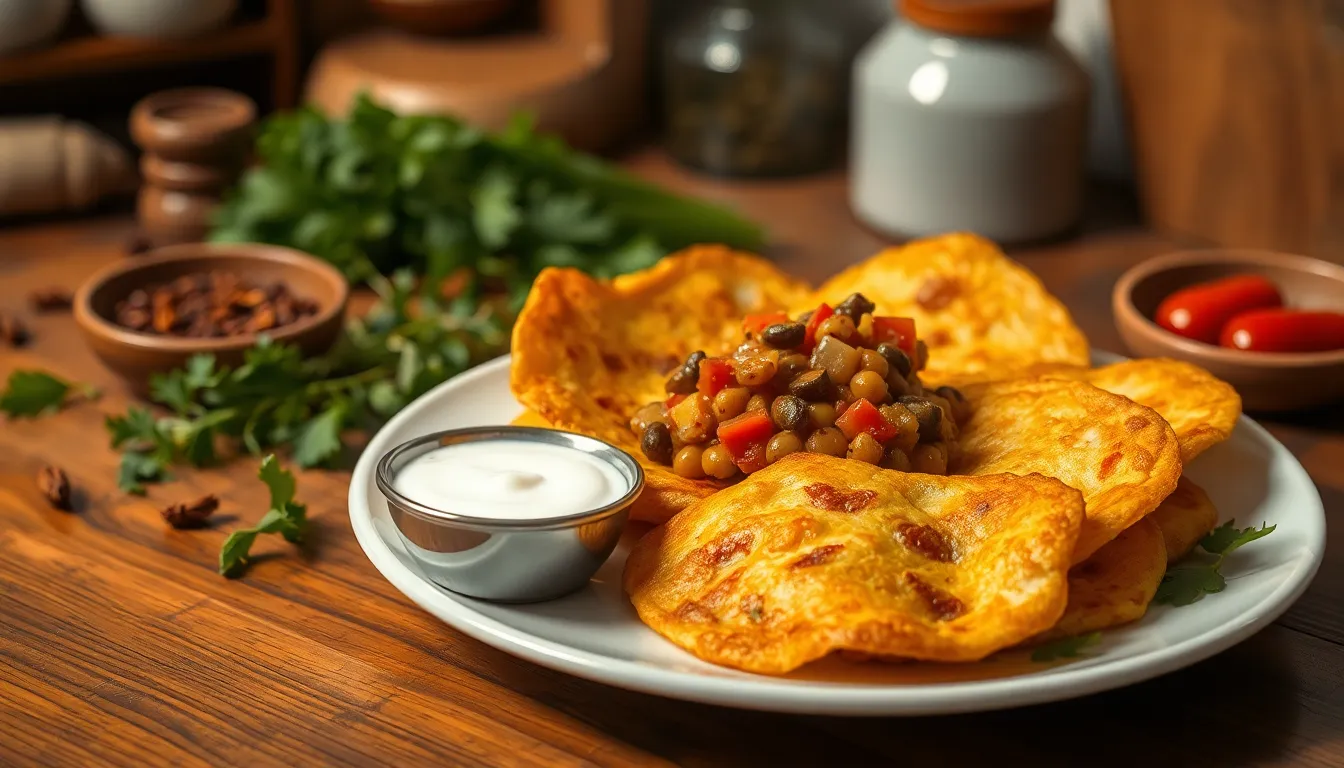In a world full of culinary wonders, few dishes can claim the quirky charm of falifkad. This delightful fusion of flavors and textures is like a culinary party in your mouth, where every bite invites you to dance. Imagine savory goodness wrapped in a crispy embrace, making it the perfect snack for any occasion, whether you’re lounging at home or on the go.
Table of Contents
ToggleOverview of Falifkad
Falifkad represents a delightful fusion of flavors and textures that captivates food lovers. This savory snack features a crispy exterior with a rich filling that varies by region and preference. Ingredients often include lentils, spices, and herbs, contributing to its unique taste.
The preparation involves frying or baking, enhancing its crispy texture while maintaining delicious moisture inside. Originating from culinary traditions, falifkad has gained popularity as a versatile snack. It serves well at events or as a quick grab-and-go option.
Popularity has led to several variations. Some include additional ingredients like cheese or different types of vegetables, broadening appeal. Its adaptability makes falifkad suitable for various diets, accommodating both vegetarians and meat eaters.
Nutritionally, falifkad provides a balanced mix of proteins and essential nutrients due to its ingredient composition. Many enjoy it alongside dips or sauces, adding another layer of flavor. Overall, falifkad stands out as a beloved choice for those seeking quick yet satisfying meals.
History and Origin of Falifkad

Falifkad traces its roots to various culinary traditions, showcasing a blend of influences from the regions where it’s most popular. This dish’s history spans centuries, with origins believed to stem from Middle Eastern and Mediterranean cuisines.
Cultural Significance
Cultural significance surrounds falifkad, as it represents more than just a dish. Many communities celebrate falifkad during festivals and family gatherings, emphasizing its role in social dining experiences. Different regions feature unique variations, making it a symbol of local heritage. Sharing falifkad often fosters connection, highlighting the importance of food in cultural practices.
Traditional Preparation Methods
Traditional preparation methods for falifkad vary by region, showcasing a range of cooking techniques. Various cooking styles include frying and baking, each contributing different textures and flavors. Common practices involve blending lentils with spices, herbs, and other ingredients before forming the mixture into shaped patties. Some chefs use unique spice blends, enhancing the dish’s aroma and taste. Families pass down these methods, preserving the culinary art associated with falifkad for future generations.
Nutritional Benefits of Falifkad
Falifkad offers significant nutritional benefits, making it an attractive snack option. Packed with essential nutrients, this dish is not only delicious but also nourishing.
Key Ingredients
Primary ingredients in falifkad include lentils, vegetables, and a variety of spices, providing a rich nutrient profile. Lentils contribute protein and fiber, promoting digestive health. Vegetables add vitamins and minerals, enhancing overall well-being. Spices like cumin and coriander introduce antioxidants, which help combat oxidative stress. Depending on regional variations, cheese or nuts may also feature, contributing healthy fats and additional protein.
Health Advantages
Health advantages of falifkad encompass several aspects. Its high fiber content supports heart health and aids in regulating blood sugar levels. Protein in lentils promotes muscle repair and growth, making falifkad satisfying. Offering a balance of macronutrients, it acts as an excellent source of energy. Consuming this dish with dips, such as yogurt or tahini, boosts probiotic intake, further enhancing digestive health. Enjoying falifkad also encourages a diverse diet, rich in flavors and nutrients.
Popular Variations of Falifkad
Falifkad showcases a variety of regional adaptations and modern interpretations that highlight its versatility. Each variation offers unique flavors and textures.
Regional Differences
Regional differences in falifkad stem from local ingredients and culinary customs. In the Mediterranean, for example, some versions incorporate feta cheese, enhancing creaminess. In South Asian cuisine, spices like turmeric and chili elevate the flavor profile, creating a spicier snack. Middle Eastern varieties may feature fillings with different vegetables or herbs, reflecting local tastes and traditions. Each variation not only showcases diversity but also demonstrates how falifkad adapts to its environment and culture.
Contemporary Twists
Contemporary twists on falifkad introduce innovative ingredients and preparation methods. Chefs experiment with quinoa or chickpea fillings to cater to health-conscious eaters. Others create fusion versions by incorporating global spices or serving falifkad with unique dips, like avocado or salsa. Some even bake instead of fry to offer a lighter option while maintaining a crispy texture. These modern adaptations keep falifkad relevant, appealing to a wider audience while respecting its traditional roots.
Falifkad is more than just a snack; it’s a celebration of flavor and culture. Its versatility allows it to adapt to various tastes and dietary preferences while maintaining its roots in tradition. With its rich history and nutritional benefits, falifkad continues to be a beloved choice for many. Whether enjoyed at festive gatherings or as a quick meal on the go, it embodies the essence of communal dining and culinary creativity. As it evolves, falifkad remains a delicious reminder of the connections forged through food.



